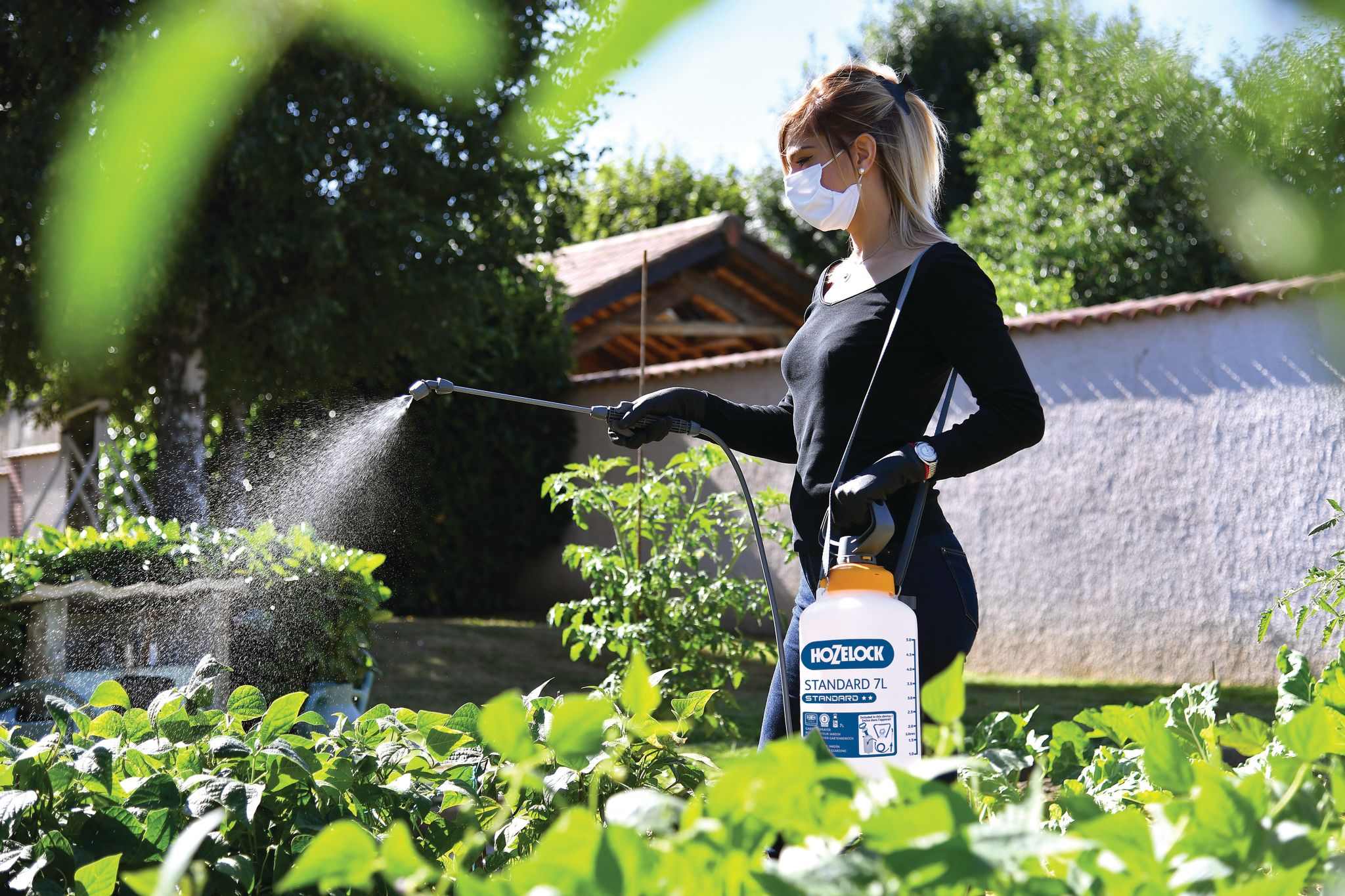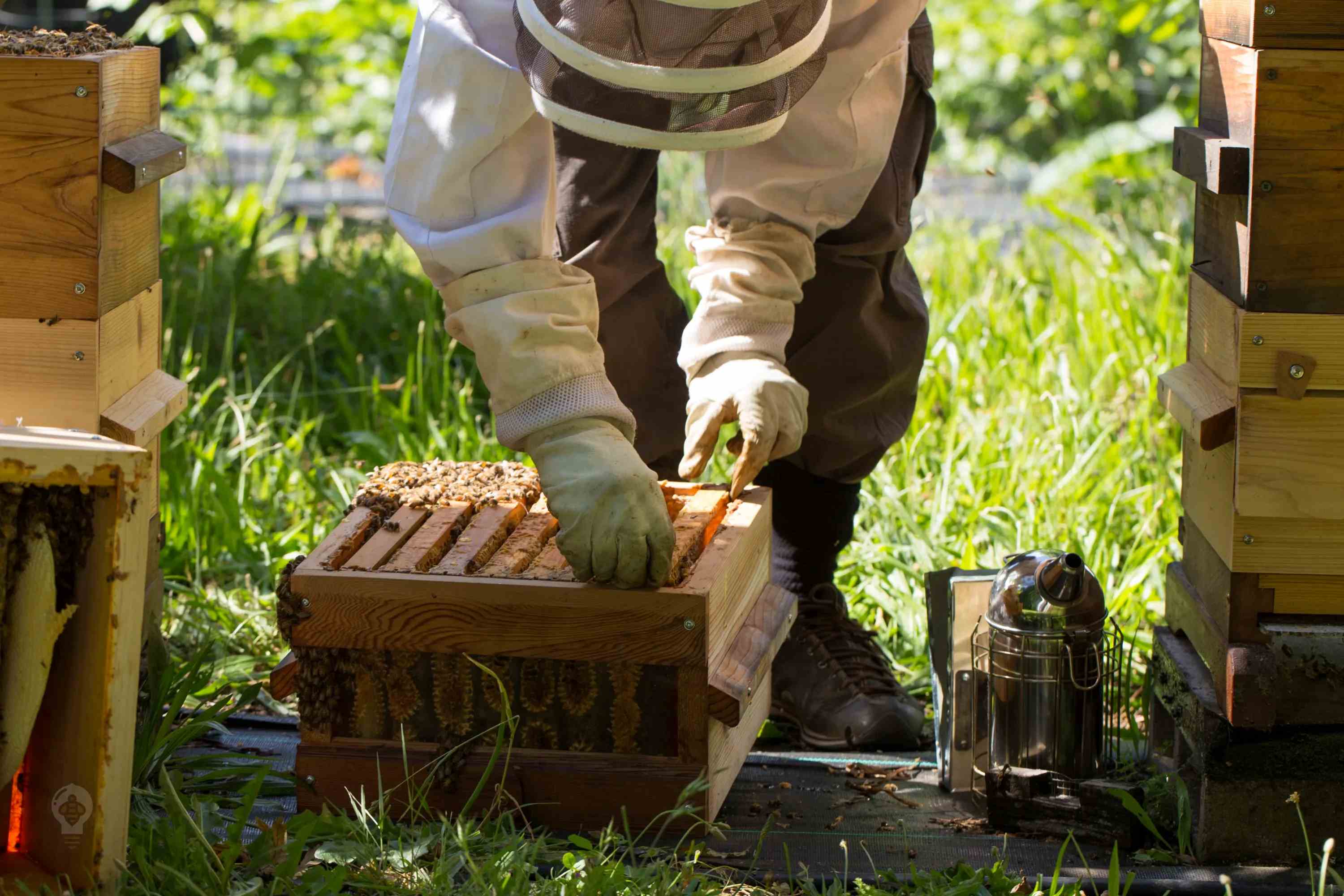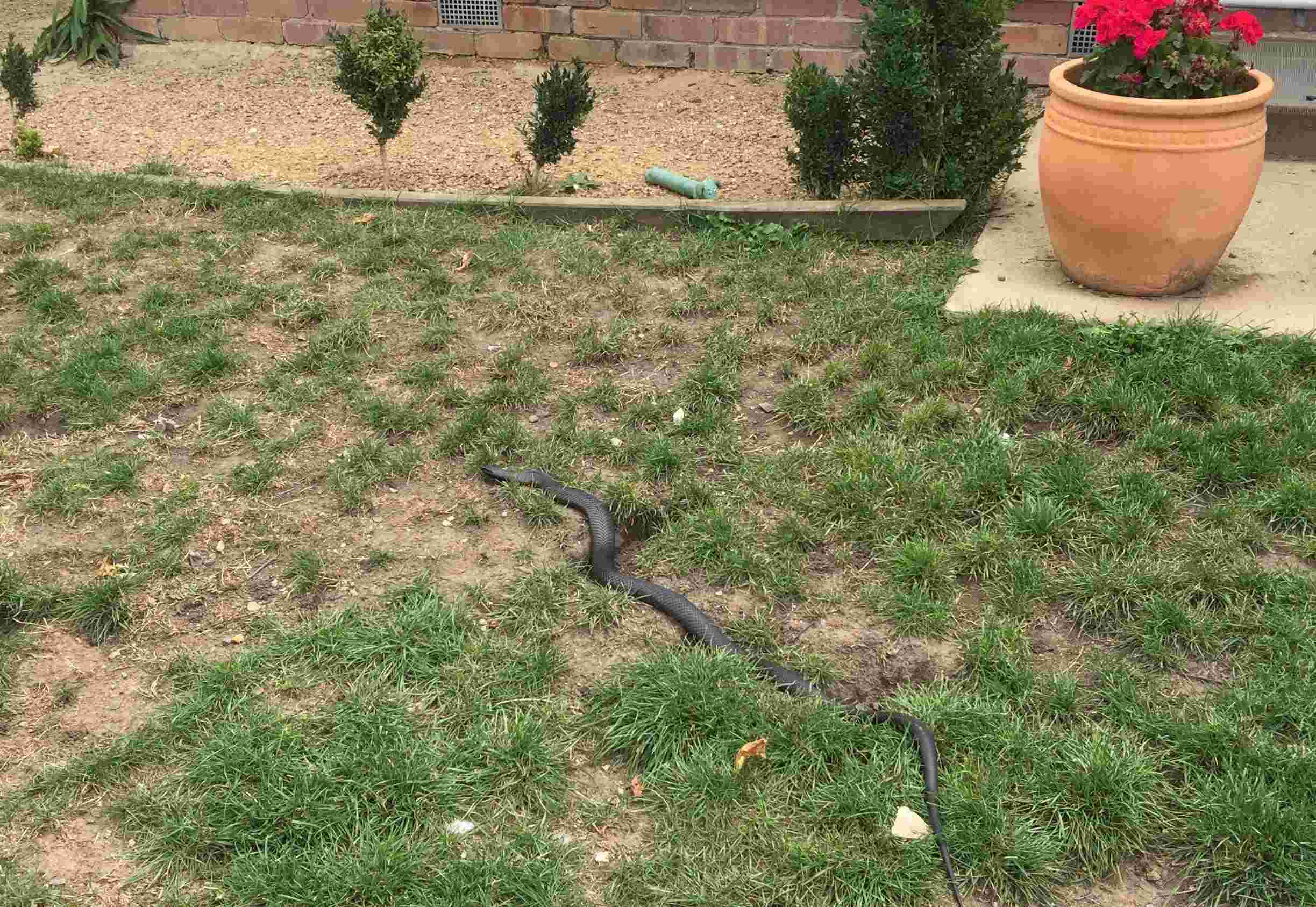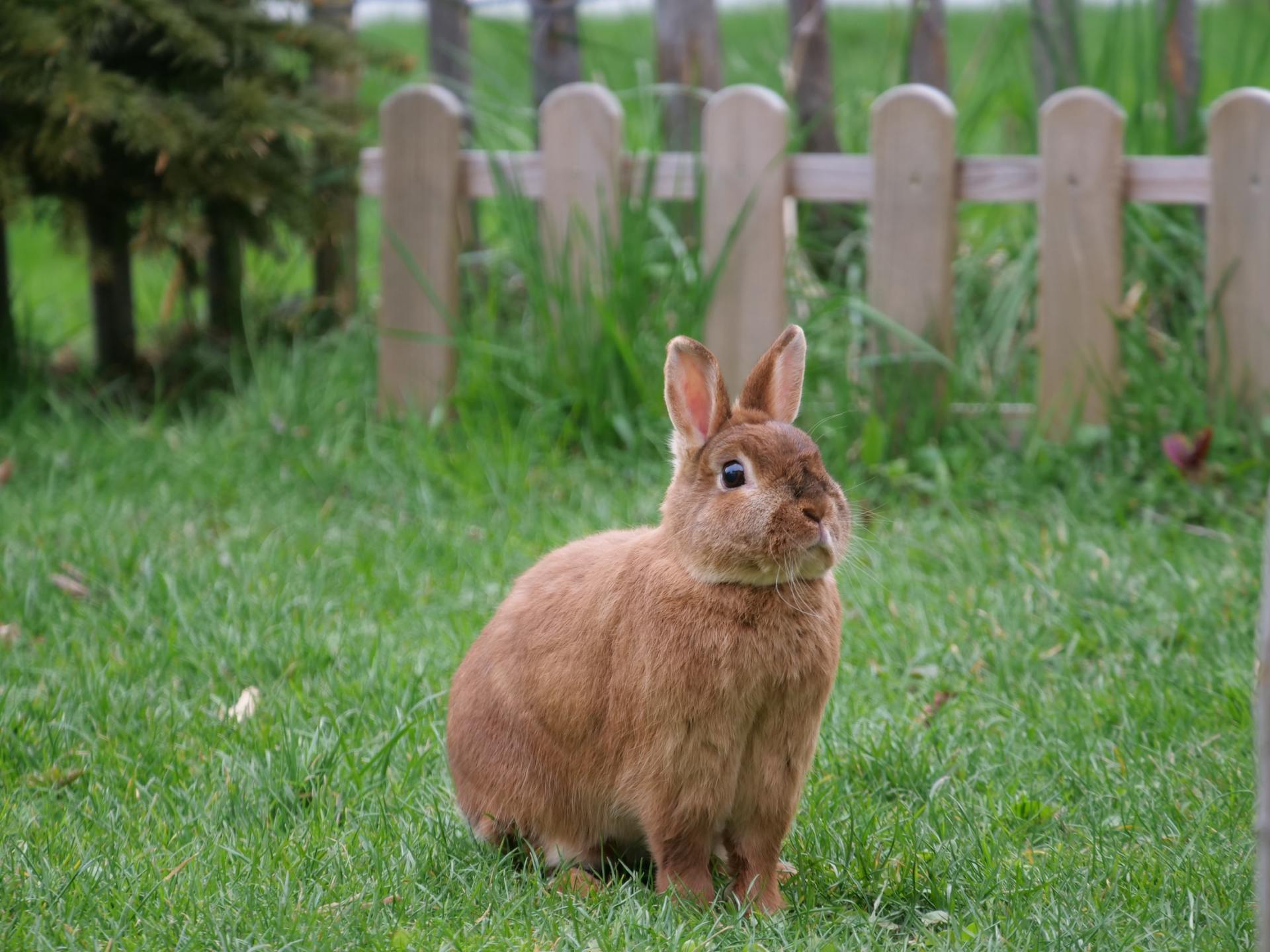Home>Gardening Tips and Tricks>How To Get Rid Of Ticks In The Backyard


Gardening Tips and Tricks
How To Get Rid Of Ticks In The Backyard
Modified: January 22, 2024
Looking for problem-solving tips to get rid of ticks in your backyard? Discover effective methods to eliminate ticks and enjoy a pest-free outdoor space.
(Many of the links in this article redirect to a specific reviewed product. Your purchase of these products through affiliate links helps to generate commission for Chicagolandgardening.com, at no extra cost. Learn more)
Table of Contents
- Introduction
- Understanding Ticks
- Identifying Tick-Infested Areas in Your Backyard
- Tick Prevention Measures for Your Yard
- Natural Ways to Get Rid of Ticks in Your Backyard
- Chemical Approaches to Eliminate Ticks in Your Backyard
- Managing Tick-Infested Wildlife in Your Yard
- Tick Control and Prevention Products
- Conclusion
Introduction
Welcome to the ultimate guide on how to get rid of ticks in your backyard. Ticks are small, blood-sucking arachnids that can transmit diseases to humans and pets. With the warmer months approaching, it’s crucial to take proactive measures to protect yourself and your loved ones from these pesky pests.
Ticks are commonly found in wooded areas, tall grasses, and shrubs, making your backyard an ideal habitat for them to thrive. They latch onto humans and animals, feeding on their blood and potentially causing illnesses such as Lyme disease, Rocky Mountain spotted fever, and other tick-borne diseases. It’s important to understand how to identify and eliminate ticks from your outdoor space, ensuring a safe and enjoyable environment for everyone.
In this comprehensive guide, we will explore various methods to effectively get rid of ticks in your backyard. We will discuss natural approaches, chemical treatments, and ways to manage tick-infected wildlife. Additionally, we will explore tick control and prevention products that can aid in keeping your yard tick-free.
By implementing the strategies outlined in this guide, you can create a tick-resistant environment and minimize the risk of tick-borne diseases. Whether you’re an avid gardener, enjoy outdoor activities, or have children and pets who love to play in the yard, this guide will equip you with the knowledge and tools needed to ensure a tick-free backyard.
So, let’s delve into the world of ticks and discover effective ways to reclaim your backyard from these tiny, but formidable, pests.
Understanding Ticks
To effectively combat ticks in your backyard, it’s important to have a good understanding of these tiny creatures. Ticks are arachnids, belonging to the same family as spiders and scorpions. They are external parasites that feed on the blood of animals, including humans.
Ticks have a unique life cycle consisting of four stages: egg, larva, nymph, and adult. During their life cycle, ticks require a blood meal at each stage to develop and grow. They undergo molting between stages, shedding their outer layer to accommodate their increasing size.
Their small size, ranging from the size of a pinhead to a sesame seed, makes them difficult to detect. Ticks have eight legs and are commonly brown or black in color. They have a flattened body shape, allowing them to easily navigate through fur or feathers.
Ticks are most active during warm weather, typically in spring and summer. They thrive in moist and shady environments, such as shrubs, tall grasses, and wooded areas. These are the areas you should pay close attention to when inspecting your backyard for ticks.
One of the major concerns with ticks is their ability to transmit diseases. Lyme disease is one of the most commonly known tick-borne illnesses, caused by the bacterium Borrelia burgdorferi, which is transmitted through the bite of infected black-legged ticks. Other diseases transmitted by ticks include Rocky Mountain spotted fever, babesiosis, anaplasmosis, and ehrlichiosis.
Ticks can latch onto humans and animals when they come into contact with them during outdoor activities. They prefer warm and moist areas of the body, such as the scalp, armpits, groin, and behind the ears. It’s important to check yourself, your children, and your pets for ticks after spending time outdoors, especially in areas where ticks are prevalent.
By understanding the life cycle, behavior, and potential health risks associated with ticks, you can take appropriate measures to protect yourself and your family. The next step is to identify tick-infested areas in your backyard, which will be discussed in the following section.
Identifying Tick-Infested Areas in Your Backyard
Identifying tick-infested areas in your backyard is crucial to effectively target your tick prevention efforts. Ticks thrive in specific environments, usually those that provide adequate shade, moisture, and access to hosts. By knowing where ticks are likely to be found, you can focus on these areas and minimize the risk of tick encounters.
Here are some key areas to pay attention to when identifying tick-infested locations:
- Tall grasses and weeds: Ticks are commonly found in tall grasses and overgrown vegetation. Keep these areas mowed and well-maintained to reduce tick populations.
- Wooded areas: Ticks thrive in wooded areas, where they can easily find hosts and remain hidden. If you have trees or forested sections in your backyard, be particularly vigilant in these areas.
- Shrubs and bushes: Ticks also seek shelter in shrubs and bushes. Trim and prune these plants regularly, allowing more sunlight to penetrate the area and reduce tick-friendly habitats.
- Leaf piles and debris: Ticks can hide in leaf piles and other yard debris, so be sure to keep your yard clean and clear of accumulated leaves and yard waste.
- Fence lines and borders: Ticks often crawl along the edges of yards, making fence lines and borders potential hotspots. Create a border of gravel or wood chips to create a barrier that ticks are less likely to cross.
- Outdoor structures: Ticks can also be found in outdoor structures such as sheds, playhouses, and birdhouses. Regularly inspect these structures and keep them clean and well-maintained.
It’s important to note that ticks can also be brought into your yard by wildlife, such as deer, rodents, and birds. These animals act as hosts for ticks and can introduce them into your backyard. If you notice an abundance of wildlife in your yard, it may be necessary to implement measures to manage tick-infested wildlife as well.
By carefully assessing your backyard and identifying potential tick hotspots, you can concentrate your tick prevention efforts on these areas. This targeted approach will significantly reduce the risk of tick encounters and help create a safer outdoor environment for you and your family.
Tick Prevention Measures for Your Yard
Preventing ticks from infesting your yard is an essential step in safeguarding the health and well-being of your family and pets. By implementing a few simple tick prevention measures, you can significantly reduce the risk of tick encounters in your yard. Here are some effective strategies to consider:
- Keep your grass short: Ticks thrive in tall grasses, so regularly mow your lawn and trim vegetation to eliminate tick-friendly habitats.
- Create a barrier: Install barriers, such as gravel or wood chips, between wooded areas and your yard to discourage ticks from infiltrating your outdoor space.
- Remove leaf litter and debris: Ticks often hide in leaf piles and yard debris, so regularly clean up your yard to minimize potential hiding spots.
- Install a tick barrier: Consider installing a tick barrier around your yard, such as a deer fence or a tick-repellent plant border, to prevent ticks and wildlife from entering your yard.
- Keep wildlife away: Remove potential wildlife attractants from your yard, such as bird feeders and open food sources, to discourage wildlife activity and reduce the likelihood of ticks being introduced.
- Use tick repellents for your yard: Apply tick repellents specifically designed for outdoor use on your lawn and vegetation. Follow the instructions carefully to ensure safety and effectiveness.
- Consider landscaping modifications: Opt for low-maintenance landscaping and choose plants that repel ticks, such as lavender, marigolds, and rosemary.
- Encourage natural predators: Attract tick-eating animals like birds, chickens, and guinea fowls to your yard by providing appropriate habitats and food sources.
- Minimize tick-friendly environments: Regularly thin out vegetation, especially in shaded areas, and create open spaces that are less hospitable to ticks.
- Limit tick hosts: Discourage wildlife hosts, such as deer and rodents, from entering your yard by using fencing, repellents, or natural deterrents.
Implementing these tick prevention measures will help create a less hospitable environment for ticks in your yard. However, it’s important to remember that these strategies may not eliminate all ticks completely. Therefore, it is essential to combine these preventative measures with regular tick checks for yourself, your family, and your pets after spending time outdoors.
By taking a proactive approach to tick prevention, you can greatly reduce the risk of tick encounters in your yard and enjoy a safer and more enjoyable outdoor space.
Natural Ways to Get Rid of Ticks in Your Backyard
If you prefer to use natural methods for tick control in your backyard, there are several effective options available that can help reduce tick populations without the use of chemicals. Here are some natural ways to get rid of ticks:
- Use diatomaceous earth: Sprinkle food-grade diatomaceous earth in areas where ticks are prevalent. This natural powder acts as a desiccant, drying out and killing ticks upon contact.
- Create a tick-repellent barrier: Plant tick-repellent plants such as lavender, rosemary, and marigolds around the perimeter of your yard. These plants emit natural odors that deter ticks.
- Introduce tick-eating animals: Encourage the presence of tick-eating animals like chickens, guinea fowl, or birds in your yard. These natural predators can help control tick populations.
- Keep a tick-free zone: Create designated tick-free zones in your yard, such as a play area, by regularly maintaining them and keeping them free of tall grasses and leaf litter.
- Utilize tick tubes: Place tick tubes in your yard, which contain treated cotton balls that attract mice. The mice collect the treated cotton to create their nests, effectively eliminating ticks that come into contact with the treated material.
- Mow the lawn regularly: Keep your grass short and well-maintained to reduce tick-friendly habitats. Ticks prefer tall grasses, so keeping the lawn trimmed can deter their presence.
- Prune shrubs and trees: Trim shrubs and trees to let more sunlight into your yard. Ticks thrive in shaded areas, so by reducing dense vegetation, you make the environment less favorable for ticks.
- Apply natural tick repellents: Use natural tick repellents on yourself, your children, and your pets when spending time outdoors. Essential oils such as citronella, eucalyptus, and neem are known to repel ticks.
- Reduce excess moisture: Ticks thrive in moist environments, so fix any areas in your yard that retain excess moisture. Ensure proper drainage and avoid overwatering.
- Keep wildlife away: Prevent wildlife, such as deer and rodents, from entering your yard by using fences, repellents, or natural deterrents. By reducing tick hosts, you can minimize tick populations in your yard.
Remember that natural methods may require consistent and ongoing effort. It’s essential to regularly assess and maintain the natural tick control methods you choose to ensure their effectiveness in managing tick populations in your backyard.
By implementing these natural tick control measures, you can enjoy your outdoor space with peace of mind, knowing that you are taking environmentally friendly steps to reduce the presence of ticks in your yard.
Chemical Approaches to Eliminate Ticks in Your Backyard
If you’re dealing with a severe tick infestation in your backyard, or if you prefer a more aggressive approach to tick control, chemical treatments can be an effective solution. Here are some chemical approaches to consider for eliminating ticks in your yard:
- Tick sprays: Spray insecticides specifically formulated for ticks around the perimeter of your yard and in tick-prone areas. These sprays can help kill adult ticks and disrupt their life cycle.
- Tick granules: Apply tick-killing granules to your yard, focusing on areas where ticks are commonly found. Water the granules in to activate the treatment, which will kill ticks and prevent new ones from emerging.
- Tick baits: Use tick baits, which contain attractants that lure ticks toward them. Once the ticks come into contact with the bait, they are exposed to insecticides, effectively eliminating them.
- Professional pest control services: If your tick infestation is severe and DIY methods are not providing the desired results, consider hiring a professional pest control service. They have access to stronger insecticides and can provide targeted treatments to eliminate ticks.
- Tick repellents for pets: Use tick repellent products specifically designed for pets, such as sprays, spot-on treatments, or collars. These products can repel and kill ticks on your furry friends, reducing the risk of tick-borne diseases.
- Pesticide-treated clothing: Consider treating your outdoor clothing with permethrin-based products. Permethrin is an insecticide that repels and kills ticks on contact, providing an extra layer of protection during outdoor activities.
- Tick control for wildlife: If you have a high wildlife population in your yard that contributes to the tick infestation, consider contacting local wildlife management authorities or professionals to implement wildlife control measures.
- Treating tick-infested areas: For severe tick infestations, you may need to treat specific areas in your yard, such as shrubs, bushes, or wooded sections, with targeted insecticides. Consult with a professional or follow product instructions carefully when applying these treatments.
- Regular maintenance: To prevent future tick infestations, establish a regular maintenance routine that includes periodic treatments and inspections to ensure the effectiveness of the chemical approaches.
It’s important to note that chemical treatments should be used responsibly and according to the instructions provided by the manufacturer. Take necessary precautions to protect yourself, your family, and the environment when using chemical tick control methods.
When considering chemical approaches, it’s always a good idea to consult with professionals who have experience in tick control. They can provide guidance on the most appropriate and effective chemical treatments for your specific situation.
By utilizing chemical approaches in conjunction with other tick prevention measures, you can significantly reduce tick populations in your backyard and create a safer environment for all.
Managing Tick-Infested Wildlife in Your Yard
When dealing with a tick infestation in your yard, it’s crucial to address the issue of tick-infested wildlife. Animals such as deer, rodents, and birds can introduce ticks into your yard, perpetuating the cycle of infestation. Here are some strategies for managing tick-infested wildlife in your yard:
- Remove wildlife attractants: Identify and eliminate potential food and water sources that attract wildlife into your yard. This includes securing trash cans, removing pet food from outdoor areas, and eliminating standing water.
- Install fencing: Erect deer fencing or other types of wildlife barriers to restrict access to your yard. These physical barriers can help prevent wildlife from entering and spreading ticks.
- Use repellents or deterrents: Spraying or applying wildlife-specific repellents or deterrents can discourage animals from frequenting your yard. These products emit scents or tastes that animals find unpleasant, thus reducing their presence.
- Create natural barriers: Plant tick-repellent plants and create dense vegetation borders that act as natural barriers to deter wildlife. Certain plants, such as rosemary and mint, are known for repelling deer and other animals.
- Remove shelter and nesting spots: Regularly inspect your yard for potential wildlife shelters, such as piles of brush, stacks of firewood, or overgrown vegetation. Clear these areas to discourage wildlife from nesting and carrying ticks onto your property.
- Consider professional wildlife management: In cases of severe infestation, professional wildlife management services can help control tick-infested wildlife populations in your yard. They have the expertise and tools to address these infestations effectively.
- Encourage natural predators: Attract natural predators of ticks, such as owls, hawks, or beneficial snakes, to your yard by providing suitable habitats and nesting areas. These predators can help control the tick-infested wildlife population.
- Regular yard maintenance: Regularly mow your lawn, trim shrubs, and clear debris from your yard to make it less appealing to wildlife. This not only reduces tick-infested wildlife activity but also eliminates potential tick habitats.
- Collaborate with neighbors: Coordinate with your neighbors to implement similar wildlife management strategies in their yards. By creating a unified effort, you can reduce the likelihood of tick-infested wildlife moving from one property to another.
- Consult with professionals: For persistent wildlife-related tick problems, consult with wildlife experts or pest control professionals who can provide guidance tailored to your specific situation.
Effective management of tick-infested wildlife requires a combination of preventive measures, habitat modification, and sometimes professional intervention. By addressing the issue of tick-infested wildlife in your yard, you can greatly reduce the overall tick population and minimize the risk of tick bites.
Keep in mind that wildlife control should be handled with care and respect for both the animals and the environment. Strive for a harmonious balance that preserves the ecosystem while mitigating the risks associated with tick-infested wildlife in your yard.
Tick Control and Prevention Products
When it comes to tick control and prevention in your yard, there are various products available that can aid in your efforts. These products are specifically designed to target ticks and help reduce their populations. Here are some tick control and prevention products to consider:
- Tick repellents: Use tick repellent sprays, lotions, or creams on your exposed skin to repel ticks. Look for products containing active ingredients such as DEET, picaridin, or oil of lemon eucalyptus.
- Tick repellent clothing: Purchase tick repellent clothing treated with permethrin, an insecticide that repels and kills ticks upon contact. These clothes provide an added layer of protection during outdoor activities.
- Tick collars for pets: Use tick collars specifically designed for pets, which release a small amount of insecticide that repels and kills ticks on contact. These collars provide long-lasting protection for your furry friends.
- Tick control sprays: Choose tick control sprays specially formulated to eliminate ticks in outdoor areas. These sprays often contain insecticides that kill ticks upon contact and provide residual protection.
- Tick control granules: Apply tick control granules to your yard and outdoor areas. These granules release tick-killing insecticides when activated by water, helping to eliminate ticks and prevent new ones from emerging.
- Tick tubes: Utilize tick tubes, which contain treated cotton balls that attract mice. The mice collect the treated cotton, killing ticks that come into contact with it and reducing tick populations.
- Tick traps: Set up tick traps in specific areas of your yard to attract and trap ticks. These traps often use carbon dioxide or other bait to lure ticks, helping to reduce their numbers.
- Electronic tick repellents: Consider using electronic tick repellent devices that emit ultrasonic or electromagnetic frequencies to deter ticks. While their effectiveness may vary, some people find them helpful in combination with other prevention methods.
- Tick control foggers: Use tick control foggers or misters to treat large outdoor areas. These devices release a fine mist of insecticide, reaching ticks in foliage and other hidden locations.
- Tick control for wildlife: If you have a significant wildlife presence in your yard contributing to the tick problem, specialized wildlife control products such as deer repellents or rodent deterrents may be necessary.
When using tick control and prevention products, always read and follow the instructions provided by the manufacturer. Take necessary precautions to protect yourself, your family, and the environment while using these products.
It’s also important to note that while these products can be effective in reducing tick populations, they are not foolproof. Regular maintenance, combined with other preventive measures, such as yard cleaning and proper personal protection, should be part of your comprehensive tick control strategy.
By incorporating tick control and prevention products into your overall tick management plan, you can enhance the effectiveness of your efforts and create a safer environment in your yard.
Conclusion
Creating a tick-free backyard is essential for the health and safety of you, your family, and your pets. Ticks are not only a nuisance but can also transmit harmful diseases, making effective tick control and prevention measures crucial. By understanding the nature of ticks, identifying tick-infested areas, and implementing the right strategies, you can significantly reduce the risk of tick encounters in your yard.
In this comprehensive guide, we have explored various aspects of tick control and prevention. We discussed the importance of understanding ticks and their life cycle, as well as how to identify tick-infested areas in your backyard. We also explored natural ways to get rid of ticks using environmentally friendly methods, and chemical approaches that can be more aggressive in eliminating tick populations. Additionally, we addressed the management of tick-infested wildlife and the use of tick control and prevention products.
Remember that tick control is an ongoing process that requires consistent effort and periodic reassessment. Combining multiple strategies, such as regular yard maintenance, natural interventions, and targeted use of chemicals or professional services, will yield the best results in keeping your yard tick-free.
It’s important to note that no prevention method can provide a 100% guarantee against ticks. Regular tick checks on yourself, your family, and your pets are crucial, as early detection can help mitigate the impact of tick bites. If you notice any unusual symptoms or experience a tick bite, consult with a healthcare professional as soon as possible.
With these tools and knowledge at your disposal, you can reclaim your backyard and enjoy outdoor activities without the worry of ticks. By implementing the appropriate tick control and prevention measures, you can create a safer and more enjoyable environment for you and your loved ones.










